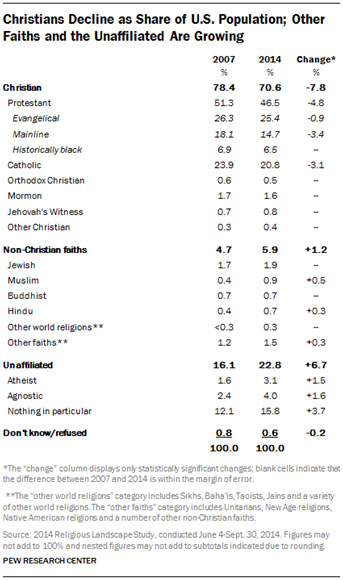By TIO Staff
BY THE NUMBERS

Last month Pew Research Center for Religion and Public Life published “America’s Changing Religious Landscape,” based on 35,071 interviews done between June and September last year, and comparing the new data with a similar survey in 2007. The report’s subhead – Christians Decline Sharply as Share of Population; Unaffiliated and Other Faiths Continue to Grow – summarizes the main findings, but the whole report is full of interesting information. Shifts in religion are occurring in all age groups, ethnicities, faiths, geography, and demographic groups.
A net decline of Christians came to nearly eight percent of the population, or about five million people. The biggest decline was among “mainline” Protestant traditions; even Evangelical traditions registered a small decline, not in numbers but in percentage of the population. The really big increase was among the unaffiliated (atheist, agnostic, or “nothing in particular”), which went up 6.7 percent, to 22.8 percent (about 56 million), becoming larger than the Catholic Church, with 20.8 percent of the population.
Pew’s report unleashed religious pundits everywhere, interpreting the numbers, drawing a variety of conclusions, from the self-serving to the provocative. What seems clear is that in a day of crumbling institutions and authority structures, along with increasing digital relationships and resources, religion is shifting day-by-day in our midst.
